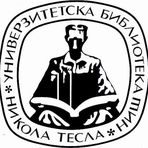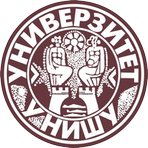Title
Arhitektura srpskog pravoslavnog hrama - uticaji i razvoj u prvim decenijama XXI veka
Creator
Stanimirović, Mirko, 1977-
Copyright date
2017
Object Links
Select license
Autorstvo-Nekomercijalno 3.0 Srbija (CC BY-NC 3.0)
License description
Dozvoljavate umnožavanje, distribuciju i javno saopštavanje dela, i prerade, ako se navede ime autora na način odredjen od strane autora ili davaoca licence. Ova licenca ne dozvoljava komercijalnu upotrebu dela. Osnovni opis Licence: http://creativecommons.org/licenses/by-nc/3.0/rs/deed.sr_LATN Sadržaj ugovora u celini: http://creativecommons.org/licenses/by-nc/3.0/rs/legalcode.sr-Latn
Language
Serbian
Cobiss-ID
Theses Type
Doktorska disertacija
description
Datum odbrane: 30.09.2017.
Other responsibilities
mentor
Kurtović Folić, Nađa, 1947-
član komisije
Jovanović, Goran
član komisije
Stanković, Danica
član komisije
Stojaković, Vesna
član komisije
Momčilović-Petronijević, Ana
Academic Expertise
Tehničko-tehnološke nauke
University
Univerzitet u Nišu
Faculty
Građevinsko-arhitektonski fakultet
Group
Katedra za konstukcije i konstrukcijske sisteme arhitektonskih objekata
Alternative title
The architecture of serbian orthodox temple - the influences and development in the decades of XXI century
Publisher
[М. D. Stanimirović]
Format
334 str.
description
Bibliografija: str. 277-328
description
Architecture, History and Theory of architecture and art / Architectural design
Abstract (en)
The basic religious duties performed in the Temple are connected with the temple
liturgies. The Serbian Orthodox Church is traditionally represented by various architectural
shapes and numerous architectural types. The significance of certain parts of the Temple and
the symbols that correspond to the philosophy of the Serbian Orthodox Church can affect the
formation of the architectural space. However, as an aesthetic and philosophic category they
do not oblige the architects to apply a certain type or model of the Serbian Orthodox Church.
Many studies show that there are no mandatory rules in the construction of the Serbian
Orthodox Church. The development of the Serbian Orthodox architecture in various social,
state and cultural circumstances in Serbia is represented. The impact analysis confirms that
dogmatic forms of construction are created under the social and ideological influences. By
researching spatial organization that is indispensable to liturgical worship it is proved that the
external and internal function of the Temple can be achieved in newly built churches that follow
the principles of modern architecture. This proves that the crisis in criteria and the chasm
between the traditional teachings of church art and the language of contemporary art theory
and practice can and has to be overcome by a clearly defined programme of the Serbian
Orthodox Temple and the author's interpretation of the ideas and principles behind traditional
models.
The aim of this research is the improvement of the design process of the Serbian
Orthodox Church, based on the analysis of the existing and newly built Serbian Orthodox
temples through architectural functions of shapes, symbols, rituals and artistic interior design.
Based on the critical analysis of recent research and available literature, basic notions
and characteristics of religious rules and architecture of the Serbian Orthodox temple are
defined in various historical, social and philosophical contexts. The contribution to the
scientific research of The Serbian Orthodox architecture is achieved by analysing the functions
of the Serbian Orthodox temple in terms of spatial organization for performing the rituals and
artistic interior design. Based on the analysed historical development, liturgical and
iconographic programmes of the Serbian Orthodox temple, a criterion for creation of the
Serbian Orthodox churches is formed and it is used for basic typology of the temples and their
development in the second part of the XX and the first decades of the XXI century. By
summing up the influences on Serbian Orthodox temples and defining their basic and necessary
functions, some recommendations are made with the aim of improving the design process in
the architecture of the Serbian Orthodox temple in the XXI century. The process of the temples
conceptual design is aided by clearly defining theological and iconographical programme and
the presentations in the form of drawings and schemes.
Authors Key words
Sakralna arhitektura, crkva, pravila, projektovanje, Srbija
Authors Key words
Sacral architecture, Church, Rules, Architectural design, Serbia
Classification
726.5(497.11)"20"(043.3)
Subject
Т240
Type
Elektronska teza
Abstract (en)
The basic religious duties performed in the Temple are connected with the temple
liturgies. The Serbian Orthodox Church is traditionally represented by various architectural
shapes and numerous architectural types. The significance of certain parts of the Temple and
the symbols that correspond to the philosophy of the Serbian Orthodox Church can affect the
formation of the architectural space. However, as an aesthetic and philosophic category they
do not oblige the architects to apply a certain type or model of the Serbian Orthodox Church.
Many studies show that there are no mandatory rules in the construction of the Serbian
Orthodox Church. The development of the Serbian Orthodox architecture in various social,
state and cultural circumstances in Serbia is represented. The impact analysis confirms that
dogmatic forms of construction are created under the social and ideological influences. By
researching spatial organization that is indispensable to liturgical worship it is proved that the
external and internal function of the Temple can be achieved in newly built churches that follow
the principles of modern architecture. This proves that the crisis in criteria and the chasm
between the traditional teachings of church art and the language of contemporary art theory
and practice can and has to be overcome by a clearly defined programme of the Serbian
Orthodox Temple and the author's interpretation of the ideas and principles behind traditional
models.
The aim of this research is the improvement of the design process of the Serbian
Orthodox Church, based on the analysis of the existing and newly built Serbian Orthodox
temples through architectural functions of shapes, symbols, rituals and artistic interior design.
Based on the critical analysis of recent research and available literature, basic notions
and characteristics of religious rules and architecture of the Serbian Orthodox temple are
defined in various historical, social and philosophical contexts. The contribution to the
scientific research of The Serbian Orthodox architecture is achieved by analysing the functions
of the Serbian Orthodox temple in terms of spatial organization for performing the rituals and
artistic interior design. Based on the analysed historical development, liturgical and
iconographic programmes of the Serbian Orthodox temple, a criterion for creation of the
Serbian Orthodox churches is formed and it is used for basic typology of the temples and their
development in the second part of the XX and the first decades of the XXI century. By
summing up the influences on Serbian Orthodox temples and defining their basic and necessary
functions, some recommendations are made with the aim of improving the design process in
the architecture of the Serbian Orthodox temple in the XXI century. The process of the temples
conceptual design is aided by clearly defining theological and iconographical programme and
the presentations in the form of drawings and schemes.
“Data exchange” service offers individual users metadata transfer in several different formats. Citation formats are offered for transfers in texts as for the transfer into internet pages. Citation formats include permanent links that guarantee access to cited sources. For use are commonly structured metadata schemes : Dublin Core xml and ETUB-MS xml, local adaptation of international ETD-MS scheme intended for use in academic documents.


